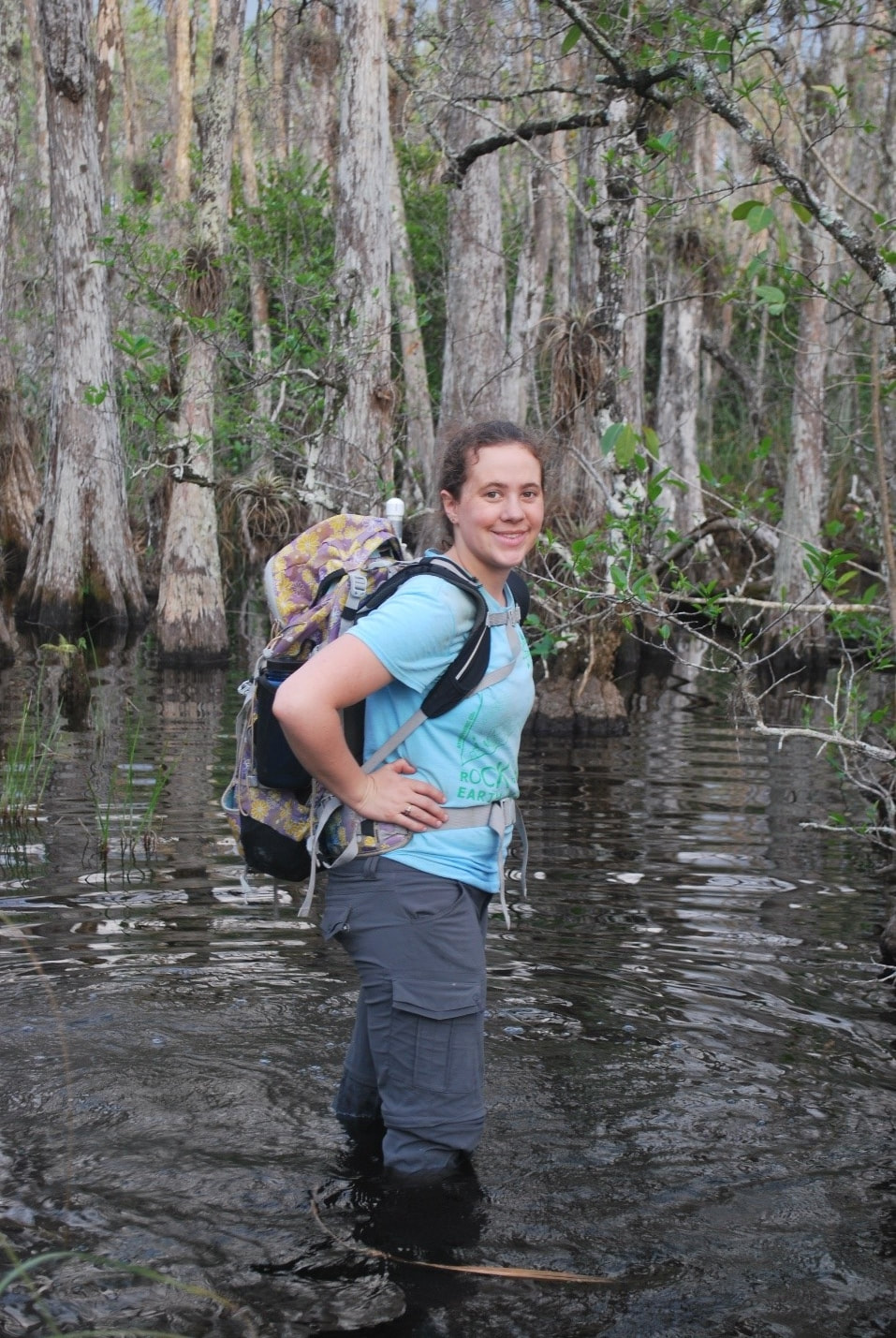Ecohydrology describes the ways that ecology and organisms influence the way water moves on a landscape, where water tends to accumulate, and how long it sticks around. It is a very flexible topic and to me is interrelated with other topics such as ecosystem engineering and landscape patterning. Because I have a plant bias, I tend to think most about how vegetation communities affect hydrology, but theoretically I suppose animals could fall under this category as well (gotta love those beavers!). Whether or not people are included in ecology is a really interesting conversation that multiple fields are having, but I’m not quite to the point of thinking of human infrastructure as ecohydrology.
What are your undergraduate and graduate degrees in?
I received a B.S. in Chemistry from Yale University in 2012. Though I started out in inorganic synthetic chemistry, I gradually worked my way towards the geosciences and did my senior thesis research on isotope fractionation of rainwater along an elevational gradient and the transfer of that isotopic signature to leaf records. After several years of further exploration across scientific fields, I began graduate study in ecology at Duke University and received my PhD in 2020.
How did you arrive at working in/thinking about ecohydrology?
I probably first started to think about it in high school gym class because our tennis court was on an island in the middle of a marsh, and being bad at tennis, I spent a lot of time wading around through the marsh. I started thinking about it in a more academic sense when I started graduate school. The first project I was involved in during my first few months was a study of a patterned karst landscape in Southern Florida. The landscape is extremely flat and is marked by regularly spaced depressions where soils are deeper and cypress trees grow taller. Through multiple research methodologies by various researchers on the project, the hypothesis for how this patterning originated is that the cypress tree roots dissolve the underlying karst, enlarging depressions, and those depressions then have longer hydroperiods and can support greater tree growth. It was a really elegant system for exploring ecohydrologic feedbacks.
What do you see as an important emerging area of ecohydrology?
Ecohydrology describes many complicated feedbacks on water movement and availability, and I think that being able to accurately forecast future water resource availability and flood risk is an important challenge that needs to be addressed. I also think that anthropological influences need to become more integrated into ecohydrology. This includes not just grey infrastructure, but also things like agriculture, invasive species, green infrastructure, urban hydrology, and cultural preferences and pressures that impact what plants are planted where.
Do you have a favorite ecohydrology paper? Describe/explain.
Favorite is too difficult, but I’ll share 2 papers I really enjoyed reading. Both focus on fine-scale variation in ‘eco’ that have longer timescale effects on ‘hydrology’, or vice versa. The first is by de Montety 2011, in Chemical Geology. The authors showed that instream photosynthesis caused the pH of a karst river to vary so much that the chemical equilibrium of dissolution or deposition of calcium carbonate alternated every day. Deposition happening during the day and dissolution occurred at night. This alternation impacted the development of the channel shape of the river. The second is by Duncan et al 2015 in WRR. Their work showed how evapotranspiration in near-stream floodplains impacted nitrogen export from a watershed because the daily fluctuations in water table level impacted redox potential in the soil, leading to increased nitrate export during low-flow summer months. I enjoyed both of these papers because of the elegant ways they link processes at multiple timescales in ways that are surprising and not immediately obvious.
What do you do for fun (apart from ecohydrology)?
I love all types of dance from ballet to salsa. I also spend a lot of time reading, hiking, gardening, doing yoga and rock climbing. In more normal times I enjoy traveling and meeting friends for breakfast.

 RSS Feed
RSS Feed